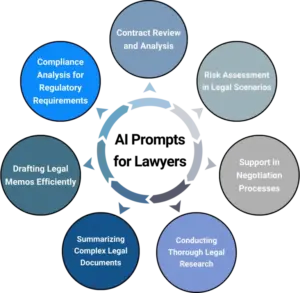In today’s busy business world, good contract management is very important for success. The contract lifecycle includes creation, negotiation, execution, and management. This process often has many stakeholders and can be complex. Here is where collaborative contract management helps. By creating a shared platform and simplifying the contract management process, companies can boost communication, increase efficiency, and reduce possible risks.
Exploring the Essentials of Collaborative Contract Development

Contract collaboration is more than just sharing documents. It means that everyone takes part and communicates well during the whole contract lifecycle. This teamwork helps ensure that all parties know their duties, deadlines, and possible risks. It helps prevent misunderstandings and creates a common understanding.
To achieve effective contract collaboration, it is important to have clear ways to communicate, define roles and responsibilities, and use a centralized system for all contract data.
When we promote transparency and responsibility, we can make our contract cycles faster, improve compliance, and build stronger business relationships.
Defining Contract Collaboration
Effective collaboration in contract management means moving away from old ways to a new, more unified method. It gathers legal teams, business units, and external parties together on one platform. This helps them communicate and work together in real-time.
Contract negotiation is an important step in the contract lifecycle that really improves with this collaborative approach. When all stakeholders can see the latest versions and track changes, the negotiation process becomes clear and efficient. This shared understanding reduces mistakes, speeds up approvals, and makes sure the final contract shows the agreed-upon terms clearly.
The Role of Technology in Contract Collaboration
CLM has vastly improved how teams work together on contracts. It offers advanced tools to make every part of the process easier. For example, with real-time document editing, several people can work on a contract at the same time. Changes are tracked, and version control is maintained. This means there’s no need for long email exchanges, which cuts down on mistakes and ensures everyone uses the most updated version.
Plus, contract management software that includes communication features lets team members collaborate smoothly right on the platform. They can comment on certain clauses, tag important stakeholders, and manage approvals. This keeps all communication in one place and makes it easy to follow. This added transparency helps keep everyone accountable, simplifies chat, and makes the whole process smoother.
Related Article: What is Cost Reimbursement Contracts? A Complete Guide
5 Strategies for Effective Collaborative Contract Management

Effective contract management depends on two key strategies: setting up centralized contract storage and promoting teamwork across different departments. When these strategies are put into action, they can greatly simplify the contract lifecycle, improve teamwork, and lessen the chance of mistakes or miscommunication.
By using these methods, organizations can create a more organized, efficient, and collaborative contract management system that helps all stakeholders.
1. Implementing Centralized Contract Repositories
Centralized contract repositories act as a single source of truth. They provide a secure and easy-to-reach place for all contract-related documents and data. This setup avoids problems that come from having contracts scattered in spreadsheets or shared drives. With a centralized contract database, finding specific documents is easy. It also makes version control simpler and keeps everyone, or stakeholders, up to date with the latest information.
Here are some key benefits of centralized contract repositories:
- Improved searchability and retrieval: You can use customizable filters and search features to quickly find specific contract versions or clauses.
- Enhanced version control: It becomes easy to track changes, keep a clear audit trail, and ensure that everyone is using the most current document.
- Reduced risk of data loss or inconsistencies: Keeping all contracts in a secure, centralized location helps prevent documents from getting lost or outdated.
2. Encouraging Cross-Functional Team Participation in Procurement
Successful contract management isn’t just up to the legal department. It needs active help from all teams in the organization. Working together helps bring in different views. This leads to a better way of creating, negotiating, and managing contracts.
When we include stakeholders from departments like sales, finance, and procurement in the contract process, we get:
- Better contract quality: Input from various teams makes contracts complete, covering specific business rules and needs.
- Quicker turnaround times: Teamwork speeds up reviews, approvals, and the whole contract process.
- Fewer mistakes: With many perspectives, we can spot issues early, which helps us avoid expensive errors.
3. Streamlining Team Collaboration with Alerts and Redlining
Integrating digital tools enhances collaboration among teams involved in contract management. Features such as alerts for contract milestones and deadlines, alongside redlining capabilities for real-time document editing, significantly improve communication and ensure that all stakeholders are aligned. These functionalities not only accelerate the review process but also foster a culture of transparency and accountability, making it easier for teams to address changes and negotiate terms effectively.
4. Key AI Applications and Their Benefits
To enhance collaboration among teams involved in contract management, AI applications play a crucial role. By integrating advanced technologies, organizations can streamline processes and improve communication, leading to more effective contract collaboration. Below are some key AI applications and their benefits:
|
AI Application |
Benefits |
|
Contract Review and Analysis |
Automates the extraction of key data, identifies missing clauses, and flags potential risks, ensuring all team members have access to accurate information. |
|
Risk Assessment |
Evaluates contract language to pinpoint potential legal or financial risks, helping teams make informed decisions collaboratively. |
|
Contract Compliance Monitoring |
Tracks contractual obligations and identifies breaches while providing alerts, fostering accountability and timely action among team members. |
|
Collaboration Tools |
Offers real-time editing and redlining capabilities, enhancing team communication and facilitating seamless negotiations and updates. |
|
Document Version Control |
Maintains a history of document changes, allowing teams to track edits and revert to previous versions when needed, ensuring transparency in the collaboration process. |
By utilizing these AI-driven applications, organizations can create a more efficient and cohesive environment for contract collaboration, ultimately leading to faster decision-making and improved outcomes.
5. Enhancing Workflow Efficiency Through Automation and Redline
Automation plays a pivotal role in improving contract workflows. It simplifies repetitive tasks, reduces the need for manual effort, and minimizes the risk of human errors. Contract management solutions offer various features for automation, such as creating contracts using templates, managing approvals and notifications automatically, and facilitating redlining for real-time document edits. By automating these tasks, organizations can save considerable time, allowing legal and business teams to focus on more strategic initiatives.
Moreover, automation ensures consistent language in contracts, adherence to specific business rules, and timely completion of tasks, leading to a streamlined and error-free contract management process. Incorporating redlining capabilities further enhances collaboration by allowing teams to make changes and comments seamlessly, ensuring that all feedback is captured and integrated efficiently.
Related Article: Why Legacy Contracts Are Obsolete? A Modern Perspective
Contract Collaboration Software: A Centralized Solution for Teams

Contract collaboration software is essential for organizations seeking to streamline their contract management processes across various teams. These tools facilitate real-time collaboration, allowing multiple stakeholders to review, edit, and comment on contracts simultaneously, enhancing efficiency and reducing errors.
By providing a centralized platform for all contract-related activities, such software enables users to track revisions, maintain version control, and ensure compliance with legal and organizational standards. Additionally, features like automated alerts and reminders help teams stay on top of deadlines, making it easier to manage renewals and negotiations effectively.
With the right contract collaboration software, organizations can foster better communication, enhance productivity, and achieve greater transparency in their contract management practices.
Related Article: Contract Storage Made Easy: Tips for Success
Overcoming Challenges in Contract Collaboration with Counterparties

Contract collaboration has many benefits, but it can be hard for organizations and their counterparties that are used to traditional ways of working. To successfully implement and enjoy the full benefits of collaborative contract management, it is important to deal with these challenges directly. By tackling these problems early and encouraging open communication, organizations can ensure smooth contract collaboration with their counterparties.
Addressing Miscommunication and Streamlining Contract Renewals
Miscommunication and data silos pose significant challenges in managing contract renewals effectively. When information is fragmented across different teams, individuals, or platforms, it leads to confusion, delays, and an increased risk of errors. To ensure successful renewals, it’s essential to foster clear communication and break down data silos.
Implementing a centralized contract management platform allows all stakeholders to access the same information in real time, reducing misunderstandings and enhancing transparency. This shared environment is particularly crucial during the renewal process, where timely updates and clear communication are vital for negotiating terms and conditions.
By encouraging teams to collaborate openly, share renewal timelines, and maintain a consolidated repository of contract data, organizations can create a proactive renewal strategy. This not only helps ensure that contracts are renewed on time but also provides valuable insights for negotiations, enabling teams to make informed decisions based on historical performance and market trends.
Streamlining Approval Processes for Enhanced Visibility
Compliance is very important in managing contracts. Slow approval processes can cause delays, missed deadlines, and expensive problems. Manually sending contracts for signatures and checking approvals across departments can take a lot of time and can lead to mistakes.
Using clear approval workflows in a contract management system can help businesses manage compliance better. Automated routing makes sure contracts follow the right steps. Electronic signatures speed up the signing process. Real-time tracking and audit trails give visibility into each stage of the approval process. This helps with compliance and lowers the chance of unforeseen delays.
Conclusion
In conclusion, making contract collaboration simpler is important for today’s teams. This helps improve efficiency and productivity. Organizations can tackle common problems by using technology, keeping their contract files in one place, and getting input from different teams. Using digital tools, like automation and AI, can change how contracts flow and help with risk assessment. By solving issues like miscommunication, data silos, and compliance concerns, teams can work together on contracts more easily. Following best practices and using technology can lead to better results in contract management for teams in many areas.
FAQs
How Can Technology Enhance Transparency in Contract Collaboration?
Contract management software offers a shared platform where teams can collaborate in real-time. This helps them to work together through the entire contract process. Features such as digital contracting, version control, and e-signatures make workflows easier. They also improve transparency and speed up approvals.
What are the best practices for effectively managing and revision contracts across different teams?
- Create a central place for contract data. This will help everyone access it easily.
- Get different teams to work together during the contract lifecycle.
- Good communication is key. Have a clear contract management process with defined roles.
- Use a centralized platform to track everything.
- Include the legal department when making contract templates. This helps make sure contracts follow the rules.
- By doing this, organizations can improve their collaborative contract management process.





